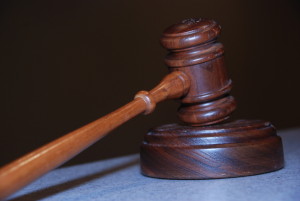 Under Massachusetts G. L. c. 123A, § 12, if the Commonwealth has reason to believe a person convicted of a sex offense is likely to re-offend, it may file a petition in the Superior Court alleging the person is a “sexually dangerous person,” and request that the person be civilly committed. Once the petition for civil commitment as a sexually dangerous person is filed, a judge determines whether the Commonwealth’s allegations meet the standard of probable cause to believe the person is sexually dangerous. The person who is the subject of this petition must be provided notice and have an opportunity to appear and contest the allegations. Generally, the petitions for civil commitment as a sexually dangerous person are filed in the months leading up to the person’s release date from confinement. If a finding of probable cause is made, the person has a right to a trial to determine if he is a sexually dangerous person. If a person is determined to be sexually dangerous after trial, he is then committed to a treatment center for an indefinite period. This means that he could be committed for as little as one day or for the rest of his life.
Under Massachusetts G. L. c. 123A, § 12, if the Commonwealth has reason to believe a person convicted of a sex offense is likely to re-offend, it may file a petition in the Superior Court alleging the person is a “sexually dangerous person,” and request that the person be civilly committed. Once the petition for civil commitment as a sexually dangerous person is filed, a judge determines whether the Commonwealth’s allegations meet the standard of probable cause to believe the person is sexually dangerous. The person who is the subject of this petition must be provided notice and have an opportunity to appear and contest the allegations. Generally, the petitions for civil commitment as a sexually dangerous person are filed in the months leading up to the person’s release date from confinement. If a finding of probable cause is made, the person has a right to a trial to determine if he is a sexually dangerous person. If a person is determined to be sexually dangerous after trial, he is then committed to a treatment center for an indefinite period. This means that he could be committed for as little as one day or for the rest of his life.
In a recent case – Commonwealth v. Libby – the Supreme Judicial Court issued a ruling clarifying the terms of a sexually dangerous person petition. Libby was convicted of a sex offense in 2002 and completed his sentence of incarceration shortly thereafter. In 2013, he was indicted on a different charge (failure to register). Unable to post bail, he was held in custody awaiting trial on the new charge. While he was in held in custody, the Commonwealth filed a sexually dangerous person petition, pursuant to G.L. c.123A, §12. Libby moved to dismiss the petition on the ground that he had already completed the sentence for the sex offense, was therefore not serving a sentence at the time the petition was filed, and thus the Commonwealth was not permitted to file the petition. His motion to dismiss, however, was denied. Libby then sought relief pursuant to G. L. c. 211, §3, which allows the SJC to review trial court rulings prior to the disposition of a case in certain limited circumstances. Continue reading →
 Massachusetts Criminal Lawyer Blog
Massachusetts Criminal Lawyer Blog




